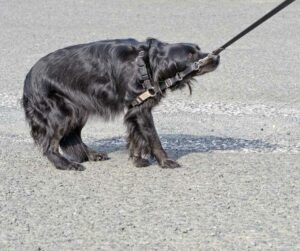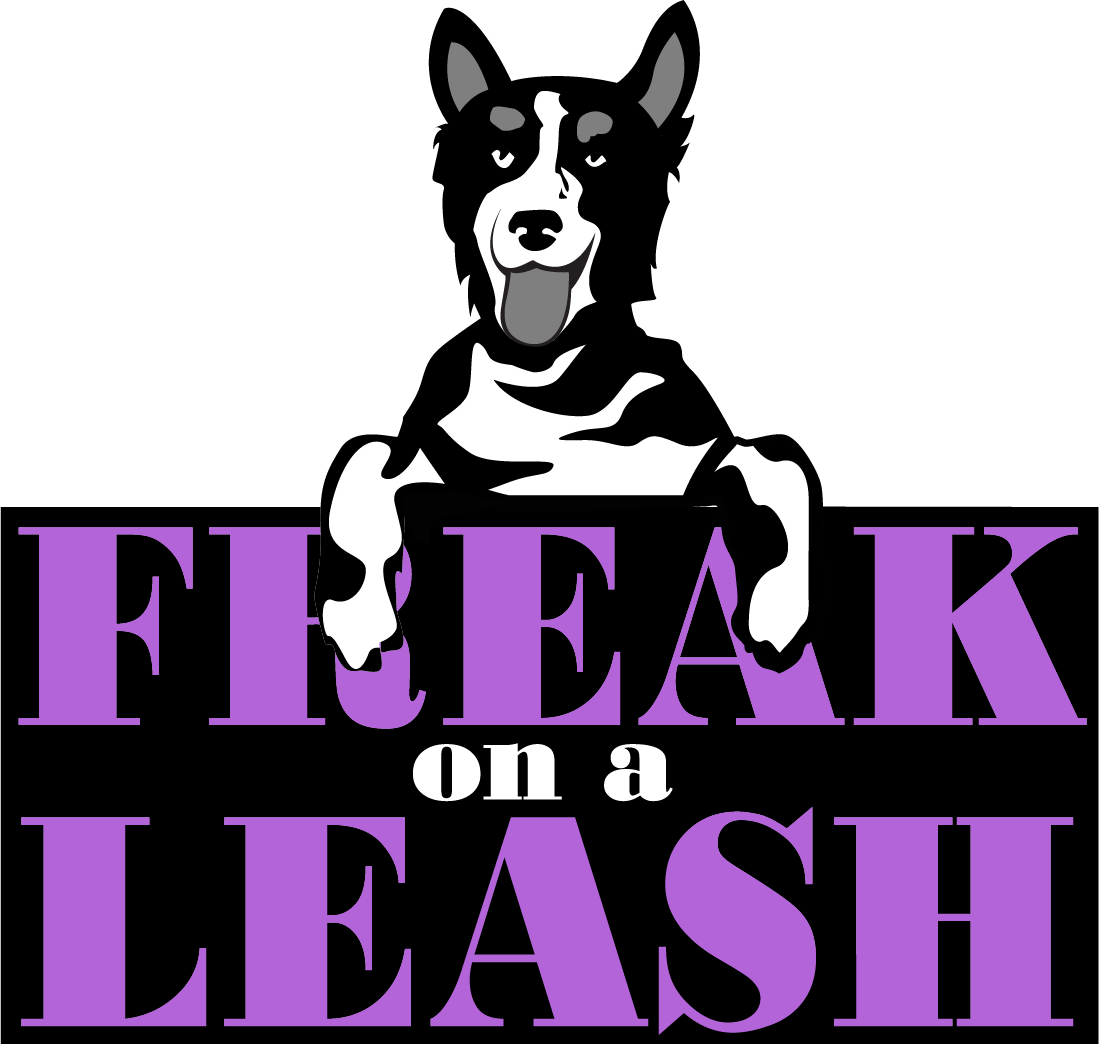Does your dog shy away from something seemingly harmless like a trash bag blowing in the wind? Does she cower when unfamiliar people come over or start barking uncontrollably at loud noises? Though it can be heartbreaking to witness, we want you to know that these reactions are more common than you might think, and there is nothing unusual about dogs experiencing fear or a phobia. In this blog post, we’ll explain what causes these mental stressors and provide insight into how you can best care for your pup during times of anxiety.
Dogs of all ages and breeds can experience fears or phobias, but the latter is far more debilitating. Fear is a normal response to possible danger, while a phobia is intense terror that may paralyze your dog. Poor breeding practices or past experiences may increase a dog’s chances of developing specific fears. If not addressed early on, fears can lead to serious issues such as severe phobias that can significantly affect a dog’s life. It’s crucial to prioritize addressing any fearful behaviors when they first surface in order to prevent them from intensifying into something much worse.
 How Does Fear Affect Dogs?
How Does Fear Affect Dogs?
Fear is a normal response to a perceived threat. Fear can have many origins in dogs, from specific noises such as fireworks and thunderstorms to objects, cars and unknown humans, children, or veterinarians. When these perceived threats are too great for a dog to cope with, it can lead to increased problem behaviors like barking and aggression. Fear also has an emotional component – the feeling of being overwhelmed by unbearable stress and anxiety. If a dog is frequently exposed to situations that evoke fear without having any means of escape or relief, their fear may become chronic. How people respond to fearful behaviors can greatly impact how the dog perceives their environment and ultimately how they behave in response to future stressors.
Providing the proper support and guidance can be essential when helping your pup process tough emotions related to fear.
Different Types of Phobias in Dogs
Fears and phobias are common problem behaviors in dogs and there are many different types.
Separation Anxiety
This is when a dog panics when its owner leaves, even for short periods of time. Depending on the dog, this can come with behaviors that can range from just looking depressed or incessant barking, to house soiling and destruction. Read more about separation anxiety from the ASPCA.
 Thunderstorm Phobia
Thunderstorm Phobia
This is a fear of thunder, lightning and loud noises. The sky darkening with cloud cover or perceived changes in atmospheric pressure can also be triggers prior to the storm itself. Dogs will try to hide, sometimes even try to claw themselves out of their crate or try to run away. Trembling and pacing are often behaviors accompanying this phobia.
Car Anxiety
Car anxiety in dogs is characterized by an extreme fear or terror of cars or car rides, leading to physical reactions such as drooling, shaking or panting. Read more about how you can help your dog through this in our blog post about car anxiety.
Social Phobias
A fear of unfamiliar people or situations. Behaviors can range from trying to hide to aggressive lunging and barking.
Noise Phobias
Noise phobia can be caused by loud sounds or fireworks and can lead to panic attacks in some dogs. Similar to thunderstorm phobia, dogs often try to get away from the noise by fleeing.
Fear of Other Dogs
Fear of other dogs can manifest itself in barking, lunging and aggression to increase the distance to the perceived threat.
Veterinary Phobia
Veterinary Phobia is a fear of the vet or vet visits, which can be triggered by sights, smells and unpleasant memories from previous exams.
 Recognizing Signs of Fear in Your Dog
Recognizing Signs of Fear in Your Dog
When your furry best friend displays signs of fear and anxiety, it can be distressing to watch. There are a variety of behaviors your pup might engage in and observable body language when experiencing fear, such as yawning, shaking, trembling, salivation, freezing, panting, pacing or vocalizing. If you recognize any of these signs, the best first step is to remain calm and provide comfort while trying to reduce environmental stressors. This could mean removing your dog from the situation or adjusting noises and objects that might be causing distress. By observing our pup’s behavior more closely in moments of distress we can catch issues early on before they turn into more serious problem behaviors. We can learn to recognize the signals of fear in our beloved pets and strive for a peaceful home environment for both humans and dogs alike.
Tips for Helping a Dog Overcome Fears or Phobias
Helping a dog overcome their fears and phobias can be difficult, but with patience and understanding it is possible. Here are our top tips to help your fearful dog.
Recognize when your dog gets scared.
Watching your dog carefully in all situations and realizing when something seems scary for your dog and getting him out of that situation is a great first step. The earlier you can intervene before your pup gets extremely upset the better
Help your dog to feel safe.
Engaging in training, games and play can help your dog to feel safe in different situations. Set yourself up for success by choosing an environment where your dogs feels safe at first to engage in these activities. When he is coping well, you can then expand to places he may be a bit worried about. Practicing known skills or engaging in favorite games in different places can help your pup begin to cope and be more relaxed in these new environments, as this gives your dog something familiar to do and builds confidence. Whether or not your dog can play is a good gauge of how comfortable he is feeling.
Don’t use punishment.
Scaring or hurting a dog that already feels unsafe is very counterproductive. Instead use positive reinforcement, petting, toys and treats to build behaviors you like.
Comfort your dog.
You can’t make your dog feel more scared by comforting him. If your dog feels better by being held or petted in a situation he is worried about, please do that. You wouldn’t just ignore your child if they become afraid of something, the same is true for your dog.
Don’t use the “face your fears” approach.
In dog trainer language this is called flooding, and will most likely make your dog more afraid rather than less. Putting a dog into a situation that he is terrified of will often increase behaviors that you are trying to resolve. For example, a dog that was growling at children and is put into situations where it has to try to cope with them is likely to start biting them to increase distance.
Seek professional help.
A certified behavior consultant or veterinary behaviorist can help you make a training plan to help your dog feel safer in his environment. Freak On A Leash can help with fears and phobias of all kinds.
Be patient.
Fears and phobias don’t usually resolve quickly. They need a sensitive approach along with a willingness working at your dog’s pace. You can’t rush this process.
Build confidence.
By showing your dog that you are standing up for him in stressful situations, you can build his confidence level. By using a desensitization approach and exposing your dog to his triggers at levels he can easily cope with you are extinguishing the fear.
Consider medication.
If your dog shows extreme fear, don’t hesitate to ask your veterinarian for medication that can help. It is not a last resort to decrease your dog’s anxiety with medication. Medication can be of crucial help in making progress working on a training plan, and doesn’t have to be forever. You can find a board-certified veterinary behaviorist at DACVB.
 Common Problem Behaviors Caused by Fear or Phobias
Common Problem Behaviors Caused by Fear or Phobias
Many dogs, just like their human counterparts, can experience fear and phobias that may cause a variety of problem behaviors.
Behavior problems caused by fear can include:
Excessive barking
Dogs that are scared of people or other animals may bark excessively in an attempt to increase the distance between them and the perceived threat. Dogs that feel anxious when left alone may bark excessively.
Aggression
Another defense mechanism that can be seen in dogs is aggression. If a dog feels threatened, it may act aggressively in order to protect itself.
Whining
Whining is a common behavior seen in fearful dogs, as this can be an indication of distress.
Vocalization
This can be in the form of howling, growling, or yelping.
 Hiding or Cowering
Hiding or Cowering
Dogs may hide or cower in a corner if they feel threatened by their environment.
Anxiety
Dogs that are scared may exhibit anxious behavior, such as panting or pacing.
Destructive Chewing
Fearful dogs may also exhibit destructive chewing in an attempt to relieve their stress and anxiety.
House Soiling
Dogs may urinate or defecate inside the home if they are feeling scared or anxious.
Escape Attempts
Fearful dogs may attempt to escape from their environment in order to avoid the perceived threat.
Understanding the root cause of these behaviors is key to being able to help your dog overcome them.
Concluding Thoughts and Next Steps for Dealing with Fears and Phobias in Pets
Dealing with fears and phobias in pets can seem like an overwhelming challenge. Although it will require extra effort from both you and your pet, success is possible. With patience, persistence, and dedication, your furry friend will eventually be able to manage their fear or phobia. If you feel overwhelmed or have difficulty making progress by yourself, seeking guidance from an experienced pet behavior consultant or trainer may be the best approach to keep both you and your pet safe while building a stronger bond.
Fears and phobias in dogs will always be a challenge for owners, but understanding the underlying cause of behavior is the first step to helping dogs overcome these issues. It is important to create an environment that is safe and calming, where your dog can feel comfortable and supported as you work toward overcoming fear-based behaviors. Be patient with your pup; a gentle and consistent approach may help them gain confidence and cope better with difficult situations. Patience, love, guidance and time are essential components to helping your pup feel secure and less anxious. Seek professional help if you’re struggling with managing problem behaviors in your pet. In many cases, a certified animal behaviorist or licensed veterinarian can provide options for treatment to help manage fear-based behaviors in pets.

